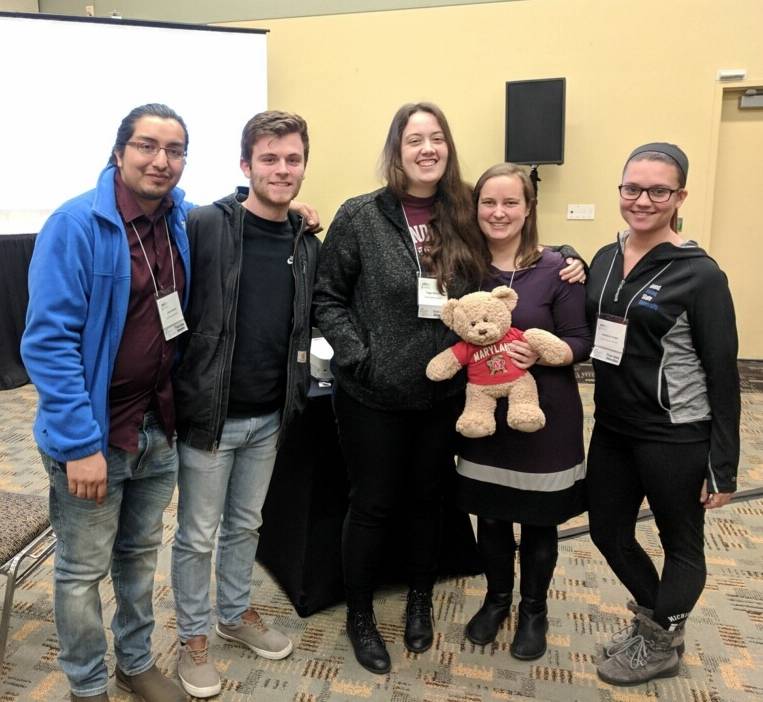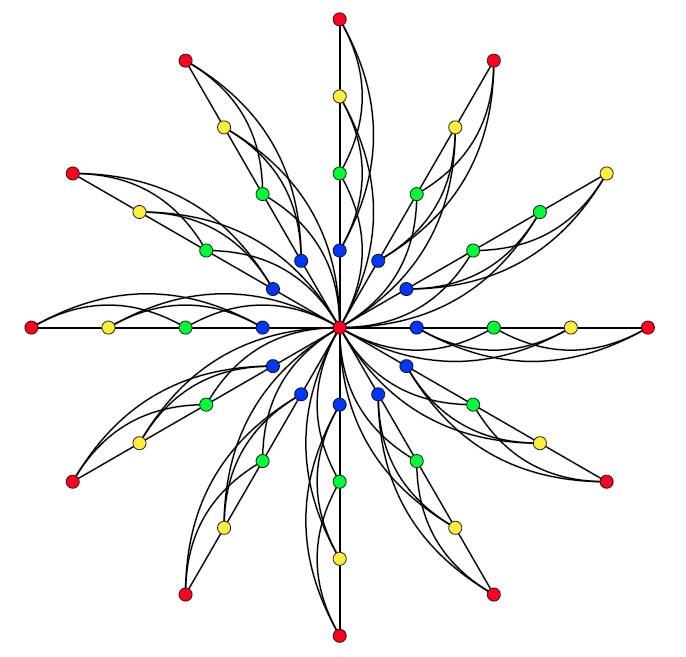A conversation about undergraduate research in mathematics
For Dr. Lauren Keough, undergraduate research is an important learning experience for any student during their studies. In this interview, we talk about undergraduate research in general, but also more specifically about her current undergraduate research project funded by a $20K mini-grant from the Center for Undergraduate Research in Mathematics that is supporting four undergraduate students during the 2018-19 academic year.
Q: Dr. Keough, we heard that you recently received a research grant from CURM. What is this grant? How does it work?
There are already many well-established summer undergraduate research programs in the mathematical sciences. CURM was founded in 2007 by Dr. Michael Dorff with the aim of helping professors figure out a sustainable plan for doing academic year undergraduate research. A great part of the grant is that it provides training for professors in how to lead undergraduate research. The mini-grants from CURM also pay students $3000 to do research for the year, as well as provide money for a faculty member to teach one fewer course during the year and travel to conferences.
Q: What are the student expected to do as part of this research project?
Students are expected to work 10 hours a week. My main motivation in applying for the grant was the pay for students. I wanted them to be able to have the time to focus on the research and not have another job. That 10 hours a week varies: some of it is dedicated to group meetings where all of us sit down and talk about what we've done that week, some of it is writing up results or preparing presentations, but a lot of it is just sitting down and doing really hard thinking. As part of the grant students are also required to write a final paper and do a presentation. We'll be doing our final presentation at the Midwest Undergraduate Mathematics Symposium but the students also did a poster presentation at the Joint Mathematics Meetings in Baltimore and gave a presentation to the department.h communication - how do you explain something no one has ever done before, especially when you've spent hundreds of hours becoming very familiar with it and the audience hasn't?

Q: How do students grow by participating in these activities? Or more generally, how does research help a student, no matter what their future career plans are?
There are so many reasons. Research is something I did not get a chance to be a part of as an undergraduate and now I'm committed to giving that experience to students. Doing research allows you to work on a completely open-ended problem; dealing with the frustrations of that is a very valuable skill. There's no answer in the back of the book and you're never quite sure if what you're trying to prove is true. The same holds in many "real jobs" in industry or when you're trying to understand a student's thinking as a teacher. It also helps a lot with communication - how do you explain something no one has ever done before, especially when you've spent hundreds of hours becoming very familiar with it and the audience hasn't?

Q: What is the specific problem the students are investigating as part of this project?
Students are investigating graphical Stirling numbers. The traditional Stirling numbers count the number of ways to put n objects into k boxes so that no box is empty. One can add restrictions to the ways you are allowed to put objects in boxes. For example, perhaps your objects are numbered 1 through n, and you never want to put consecutive numbers in the same box. How many ways are there then? You can use a graph (the vertex and edge kind) to represent what the restrictions are and ask the same question. It's a very pure math problem, but the problem is easy to understand and get your hands dirty with examples. The students have discovered many interesting connections and proved a bunch of theorems.
Q: Have you supervised/are you currently supervising other students in research activities? Do students need to be involved in a CURM grant to be able to do research?
I have supervised more than 15 undergraduate students since coming to Grand Valley in 2016. There's lots of ways for students to get involved in research depending on their interests and preparation. I always try to make sure students either have the opportunity to get credit or get paid for their work. Some ways for students to participate at GV are writing a senior thesis, participating in an independent study, or applying for some of the summer or academic year programs with the Office of Undergraduate Research and Scholarship. For students interested in graduate school, I encourage them to apply to Research Experiences for Undergraduates programs, which are competitive summer programs happening at different colleges and universities across the country.
We also asked for thoughts from two of the students, Page Wilson and Jose Garcia, who are working with Dr. Keough in this CURM project. Page said, “In high school classes, sometimes you could ask a valid question but the teacher does not have an answer so you forget about it a day later. In the research project, I was able to ask a question and we would all stop and think about it and be encouraged to explore it (of course, now I have the ability to do so since I'm more educated in how to prove things).” Jose mentioned some of the benefits he saw: “My research experience in CURM has helped me develop study skills, and communication with peers. This is because you can't just Google something. Sometimes your team helps you through this, and sometimes you are the one helping.”
We thank Dr. Keough for her dedication to engaging students in undergraduate research and wish her and her students the best with their research project.

